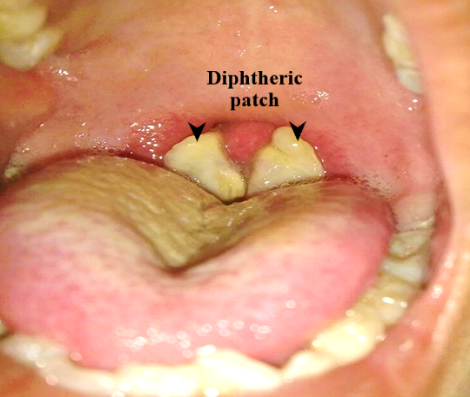

Synonym: Diphtheritic pharyngitis
Diphtheria is an infection caused by Corynebacterium diphtheria, a gram-positive bacillus.
The incidence of this disease has drastically reduced after the immunization programme.
1. Age: Young children from age 2 to 5 years.
2. Spread: Air borne spread.
3. Laryngeal diphtheria usually follows pharyngeal infection.
Corynebacterium diphtheria gravis is the most fulminant pathogen causing epidemics with high mortality.
1. Sore throat.
2. Malaise.
3. Pyrexia.
1. Lesion is seen over the tonsil with necrosis.
2. A characteristic greyish green membrane is formed on the tonsil, posterior pharyngeal wall and soft palate. This membrane contains rich fibrinous exudate and large number of bacteria.
3. This membrane bleeds on touch and thickens with time.
4. Bilateral tender cervical lymphadenopathy often present.
5. Neck cellulitis may be present giving the appearance of “Bull Neck”.

1. Infection from the pharynx easily spreads into the larynx causing rapid airway obstruction.
2. Inspiratory stridor.
3. Barking cough.
4. Recession of anterior chest wall.
They appear 3 to 6 weeks after the onset of diphtheria. The signs are:
1. Paralysis of the
Exotoxin produced by Corynebacterium is toxic to the heart and nerves.
It causes -
Diagnosis of diphtheria is made clinically. Isolation of the patient is necessary